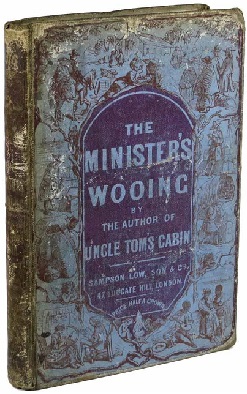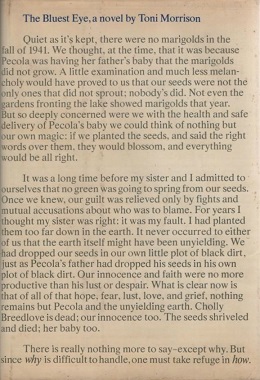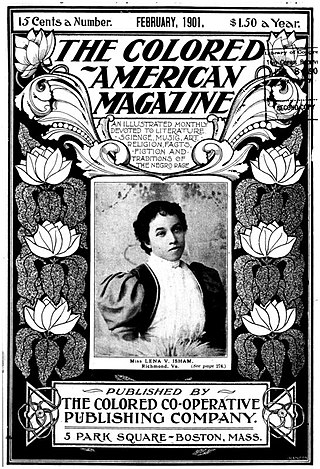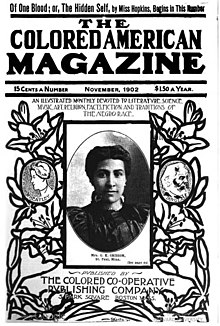
Zipporah, or Tzipora, is mentioned in the Book of Exodus as the wife of Moses, and the daughter of Reuel/Jethro, the priest and prince of Midian.

The Minister's Wooing is a historical novel by Harriet Beecher Stowe, first published in 1859. Set in 18th-century New England, the novel explores New England history, highlights the issue of slavery, and critiques the Calvinist theology in which Stowe was raised. Due to similarities in setting, comparisons are often drawn between this work and Nathaniel Hawthorne's The Scarlet Letter (1850). However, in contrast to Hawthorne's The Scarlett Letter, The Minister's Wooing is a "sentimental romance"; its central plot revolves around courtship and marriage. Moreover, Stowe's exploration of the regional history of New England deals primarily with the domestic sphere, the New England response to slavery, and the psychological impact of the Calvinist doctrines of predestination and disinterested benevolence.

The Bluest Eye, published in 1970, is the first novel written by Toni Morrison. The novel takes place in Lorain, Ohio, and tells the story of a young African-American girl named Pecola who grew up following the Great Depression. Set in 1941, the story is about how she is consistently regarded as "ugly" due to her mannerisms and dark skin. As a result, she develops an inferiority complex, which fuels her desire for the blue eyes she equates with "whiteness".

Iola Leroy, or Shadows Uplifted, an 1892 novel by Frances E. W. Harper, is one of the first novels published by an African-American woman. While following what has been termed the "sentimental" conventions of late nineteenth-century writing about women, it also deals with serious social issues of education for women, passing, miscegenation, abolition, reconstruction, temperance, and social responsibility.

Pauline Elizabeth Hopkins was an American novelist, journalist, playwright, historian, and editor. She is considered a pioneer in her use of the romantic novel to explore social and racial themes, as demonstrated in her first major novel Contending Forces: A Romance Illustrative of Negro Life North and South. In addition, Hopkins is known for her significant contributions as editor for the Colored American Magazine, which was recognized as being among the first periodicals specifically celebrating African-American culture through short stories, essays and serial novels. She is also known to have had connections to other influential African Americans of the time, such as Booker T. Washington and William Wells Brown.
The tragic mulatto is a stereotypical fictional character that appeared in American literature during the 19th and 20th centuries, starting in 1837. The "tragic mulatto" is a stereotypical mixed-race person, who is assumed to be depressed, or even suicidal, because they fail to completely fit into the "white world" or the "black world". As such, the "tragic mulatto" is depicted as the victim of the society that is divided by race, where there is no place for one who is neither completely "black" nor "white".

The Fury is a 1978 American supernatural horror thriller film directed by Brian De Palma and starring Kirk Douglas, John Cassavetes, Amy Irving, Carrie Snodgress, Charles Durning, and Andrew Stevens. The screenplay by John Farris was based on his 1976 novel of the same name.

Abe Carver is a fictional character on the long-running American soap opera Days of Our Lives. Actor James Reynolds has played the character since he originated it on the series in 1981, and is currently the fifth longest serving actor on the show. The role is one of the longest-running African American characters in American soap operas. The character was created by head writer Pat Falken Smith. Abe is the widowed husband of Lexie Carver, daughter of international crime lord, Stefano DiMera. He is the father of Brandon Walker and Theo Carver and the adoptive father of Lani Price.
Racial passing occurs when a person who is classified as a member of a racial group is accepted or perceived ("passes") as a member of another racial group.

Kandake, kadake or kentake, often Latinised as Candace, was the Meroitic term for the sister of the king of Kush who, due to the matrilineal succession, would bear the next heir, making her a queen mother. She had her own court, probably acted as a landholder and held a prominent secular role as regent. Contemporary Greek and Roman sources treated it, incorrectly, as a name. The name Candace is derived from the way the word is used in the New Testament.
One Life to Live is an American soap opera that was broadcast on the ABC network from July 1968 to January 2012, and online from April to August 2013. The series starts with One Life to Live storylines (1968–79). The plot continues in One Life to Live storylines (1980–89). The plot in the next decade is outlined in One Life to Live storylines (1990–1999) and the story concludes in One Life to Live storylines (2000–2013).
Candace Pauline Hopcus née Camp is an American writer of romance novels. She has also published under the pen names Lisa Gregory, Sharon Stephens, Kristin James and under her maiden name Candace Camp.

John Hill Wheeler (1806–1882) was an American attorney, politician, historian, planter and slaveowner. He served as North Carolina State Treasurer (1843–1845), and as United States Minister to Nicaragua (1855–1856).

The 7th Dawn is a 1964 Technicolor drama film directed by Lewis Gilbert and starring William Holden, Capucine and Tetsurō Tamba. The film, set during the Malayan Emergency, is based on the 1960 novel The Durian Tree by Michael Keon and was filmed on location in Malaysia.

Charlie Chan at the Olympics is a 1937 American mystery film directed by H. Bruce Humberstone and starring Warner Oland, Katherine DeMille and Pauline Moore. It is possibly the most topical Charlie Chan film, as it features actual footage from the 1936 Berlin Olympics. There is also a scene where Charlie crosses the Atlantic in the Hindenburg. This is the 14th film starring Warner Oland as Chan and produced by Fox.
Hannah Bond, also known by her pen name Hannah Crafts, was an American writer who escaped from slavery in North Carolina about 1857 and went to the North. Bond settled in New Jersey, likely married Thomas Vincent, and became a teacher. She wrote The Bondwoman's Narrative by Hannah Crafts after gaining freedom. It is the only known novel by an enslaved woman.

The Colored American Magazine was the first monthly publication in the United States that covered African-American culture. It ran from May 1900 to November 1909 and had a peak circulation of 17,000. The magazine was initially published out of Boston by the Colored Co-Operative Publishing Company, and from 1904 forward, by Moore Publishing and Printing Company in New York. The editorial staff included novelist Pauline Hopkins who was also the main writer. In a 1904 hostile takeover involving Booker T. Washington, Fred Randolph Moore purchased the magazine and replaced Hopkins as editor.

Contending Forces: A Romance Illustrative of Negro Life North and South is Pauline Hopkins' first major work and debut novel, published in 1900. Contending Forces focuses on African American families in post-Civil War American society. Hopkins, a child of free parents of color, imprinted her "own evasive and unsettling maternal family history, which linked her to the Atlantic slave trade, the West Indies, and the American South", providing a vivid portrayal of the shared struggles endured by both enslaved and free individuals during that time period.

Candace Amber Owens Farmer is an American conservative political commentator, author, activist, and television presenter.













